What is Resistance Welding and How Does it Work?
Last Updated on
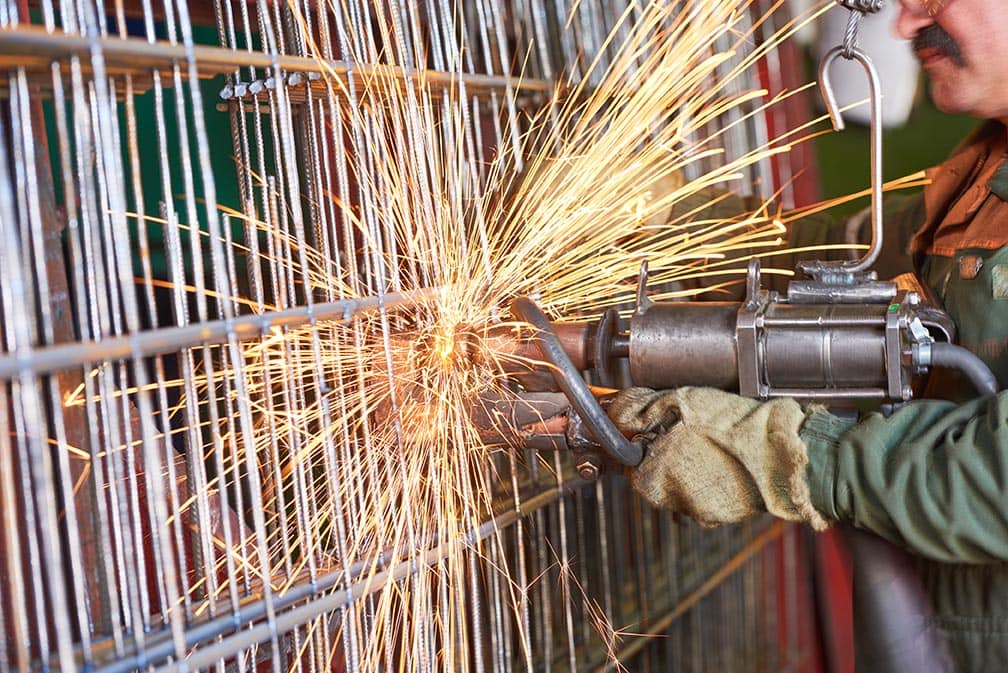
Resistance welding involves joining two metals by applying pressure and passing an electric current through them. The process is conducted for a specified period to heat the metals’ interface to the melting point. During the heating process, a clamping force is applied to hold the metals in place until the nugget solidifies. One of this method’s key advantages is that no filler material is needed to create the bond. This makes this method incredibly pocket-friendly for both small and large-scale welders.
How Does Resistance Welding Work?
Resistance welding allows welders to join two metal workpieces together by employing the principle of heat generation through electric resistance. An electric current is passed to the metal sheets through weld electrodes that apply force to the sheets. The force is then converted to heat for melting the metal at the resistance points to form a molten.
Heat is then extracted from the molten weld area by the electrode, which leads to the formation of a weld nugget at the point where it solidifies. Welders regularly apply pressure before, during, and after applying current to confine the contact area.
What are the Different Types of Resistance Welding?
Below are the different types of resistance welding processes:
1. Resistance Spot Welding
In this process, welds are created by using the heat generated by resistance to welding current flow. The resistance is generated between the faying surfaces and the force applied on the workpieces over a defined period. Spot welding uses welding electrodes’ face geometrics to focus the applied pressure to the workpieces and the welding current to the desired location. Once optimal resistance has been generated, the materials will settle down and combine to form a nugget.
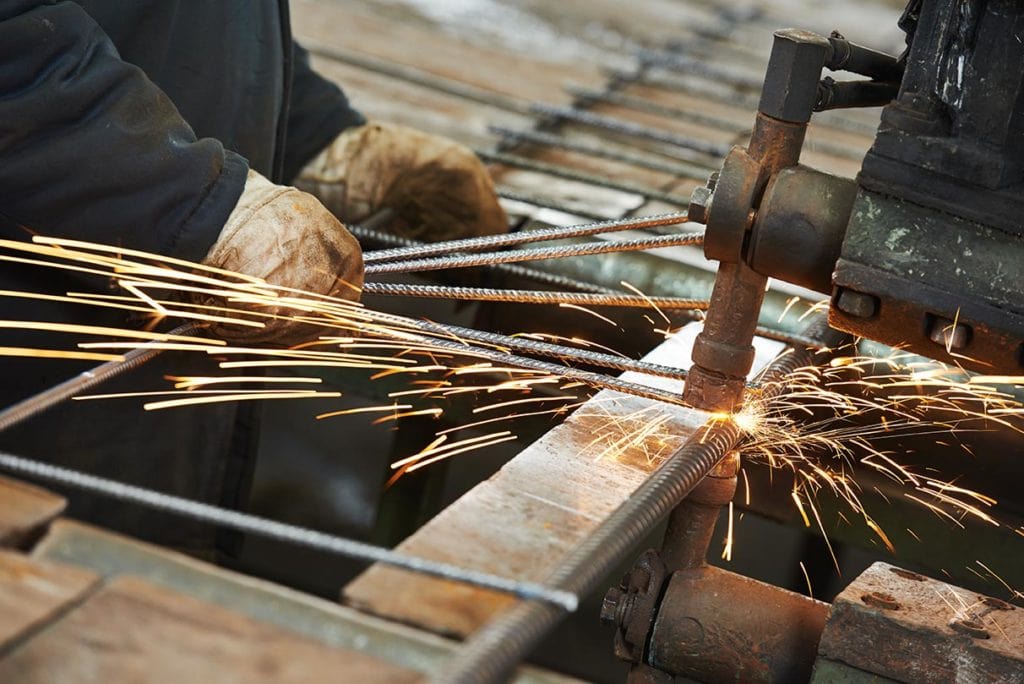
2. Resistance Seam Welding
This process uses wheel-shaped electrodes to generate force and welding current to melt the workpieces. The workpieces are inserted to roll in between the wheel-shaped electrodes while applying the weld current. The welds created may overlap, leading to a single spot weld at defined intervals or a complete welded seam.
3. Resistance Projection Welding
Projection welding localizes the welds at predetermined points. The method uses embossments, projections, or intersections to focus heat generated at the point of contact. Once the weld current generates sufficient resistance, the projections collapse, forming a nugget.
4. Resistance Butt Welding
This is a form of resistance welding used to weld two thick metal bars or plates at the edges. The binding is done by applying opposing forces directly while clamping the workpieces with the electrodes. Once the workpieces have heated up, intense pressure is applied for the nugget to form, although melting might not occur immediately. The molten is left to cool and solidify to form the weld.
5. Crosswire Welding
This is a form of resistance welding used to join bars or wires in cross joints. The binding is done by directly applying opposing forces using flat electrodes. In this process, localization of the generated heat and current occurs at the point of contact between the crossed bars or wires.
6. Resistance Bond Welding
This method uses adhesive bonding and resistance welding to form a weld. A welder begins by applying adhesive force to the faying surfaces of the sheets to be welded. Resistance spot welding is then made through the sheets before curing the adhesive. Spot welding strengthens the weld while adhesive bonds stiffness of the joints.
The Parameters in Resistance Welding
The predominant principle in resistance welding is Joule’s law of heating, where heat is generated depending on four factors. These factors include the metal’s resistance, applied current, applied current time, and heat losses through conduction and radiation.
For this principle to function optimally, several factors will influence the outcome of resistance welding, such as:
1. The Welding Current
This is the most critical element in resistance welding. Welding current usually determines the heat generation by a power of squares or I2. Whenever you increase the welding current, it will result in a proportional increase to the welded nugget’s size. However, using too much current will lead to expulsions and electrode deteriorations.
2. The Welding Time
In resistance welding, the heat generated is directly related to the welding time. A welder will require a minimum welding current and welding time to obtain a weld. Two factors usually influence the formation of a weld. They include transferring heat from the weld zone to the base metals and electrodes and losing heat from the free surfaces to the surroundings.
Whenever you increase the welding time, ensure you use a high current to increase the nugget’s size to a similar extent as that of the contact area’s electrode tip. During welding, avoid prolonging the welding time to mitigate risks such as expulsions or sticking the electrode to the workpiece.
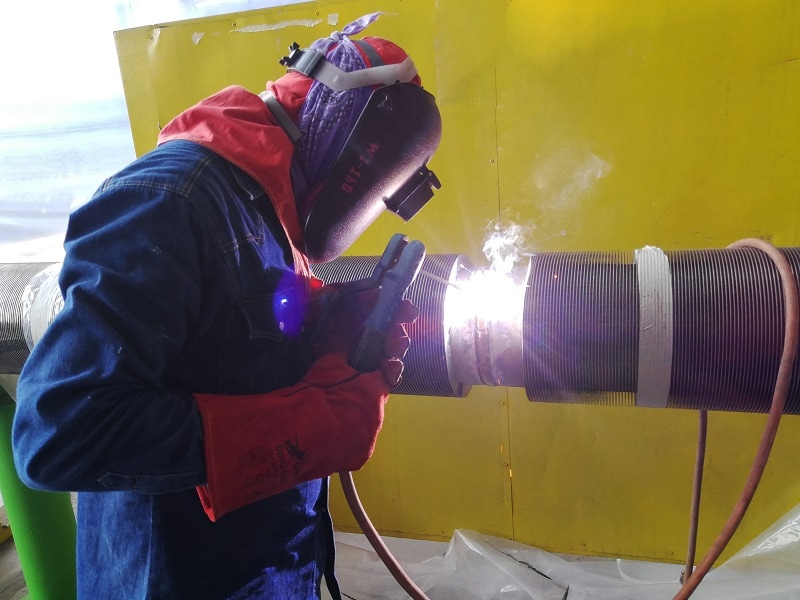
3. The Welding Force
Welding force is necessary to compress the workpieces at the welding zones to allow the current to flow smoothly. Using a low welding force may cause expulsions once you start the welding current. The expulsions will occur because contact resistance will be too high, leading to rapid heat generation. On the other hand, using a higher welding force will result in a large contact area, resulting in lower contact resistance and current density. The result will be a reduction in heat generation and the size of the weld nugget.
4. The Contact Resistance
In resistance welding, contact resistance generally decreases with an increase in temperatures and reduces proportionally with increased pressure. All metals are known to have rough surfaces. As such, an increase in the welding force will raise the contact pressure. An increase in the contact pressure leads to a rise in the total interface’s contact area due to the metal’s deformation of rough surface asperities. The deformation will eventually lead to a decrease in the contact resistance at the interface, which reduces the heat generation and the nugget’s size.
5. The Material Properties
The dynamics of resistance welding dwells on the property that all materials change when the temperature changes. The resistivity and thermal conductivity of the welding material will influence heat generation and heat transfer. Welding using metals such as copper and silver with low resistivity and high thermal conductivity will generate little heat. Due to low heat generation, joining such materials using resistance welding is extremely difficult.
When welding dissimilar metals with higher resistivity, more heat will be produced. Welders should, therefore, exercise great caution when selecting the forms of electrodes to prevent expulsion. The hardness of the material will also influence the contact resistance by producing a high contact resistance. This hardness will require more welding force due to the rough surface asperities.
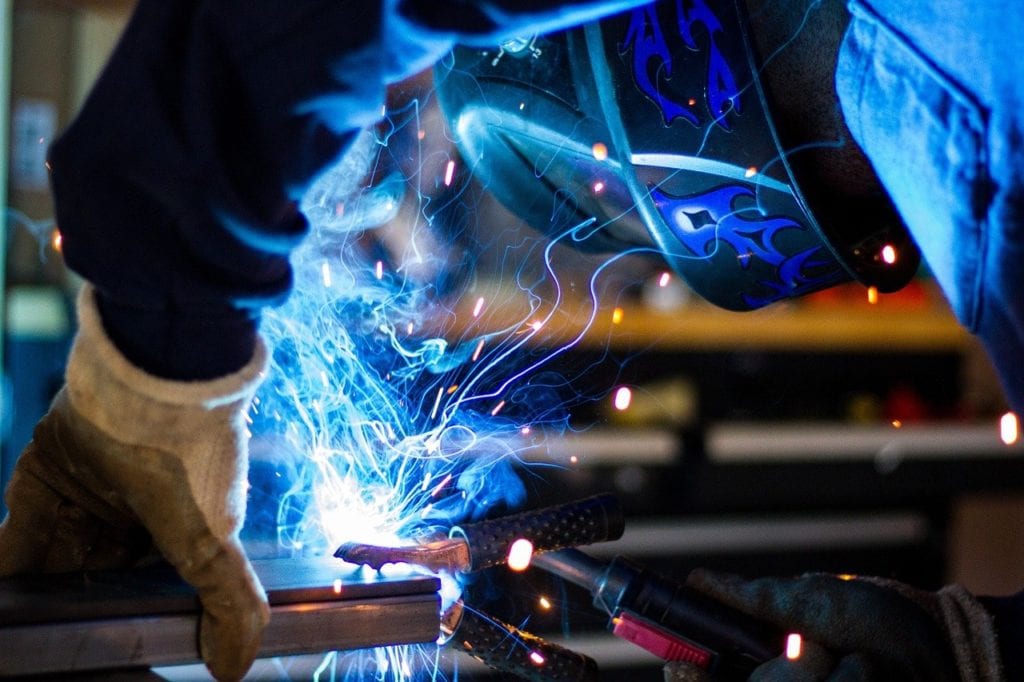
6. The Surface Coatings
Surface coatings are usually applied to protect against corrosion or used as a substrate for further surface treatment. Welders can also use coatings to facilitate the welding of intricate material combinations. In this case, the coatings are applied strategically to balance the heat on the weld interface evenly.
Surface coatings can also complicate the welding process forcing a welder to perform a particular process parameter adjustment. During resistance welding, a large portion of the surface coatings is extracted. The small percentage that remains at the weld interface will be treated as a braze metal.
7. Geometry and Dimensions
The electrode’s geometry and dimensions of the workpieces usually influence the welding and current density distribution results.
Applications of Resistance Welding
Resistance welding is applied in the following ways:
- The butt welding method is used in manufacturing wire joints, railway tracks, and wheel rims
- In the automotive industry, spot welding is used in assembling automobile bodies and large components. The method is also widely applied in the manufacture of furniture and domestic equipment
- Seam welding is mostly used in manufacturing containers, heat exchangers, little tanks, and boilers
- The resistance projection method is used in the manufacture of pumps, valves, and sensors
- Crosswire welding is widely used in manufacturing metal wire nets and shopping trolleys

The Advantages of Resistance Welding
- It is a simple method that does not require an expert to weld
- Welders can use this method to weld both similar and dissimilar metals
- High welding speeds, which is usually less than 1 second
- The procedure does not require any filler metal, flux, and protective gases
- Relatively safe due to low voltage requirements
- It’s environmentally friendly since it produces little waste or pollution
- An efficient way of welding with a high production and welding rates
The Disadvantages of Resistance Welding
- The method consumes a lot of power
- High levels of electrode wear
- Lack of portability due to a fixed source of power
- Limitation of workpieces thickness (usually to about ¼ inch)
- The process is limited to overlapping joints, which requires welders to use more material for welding

Frequently Asked Questions (FAQs)
1. Why Should I Monitor Displacement?
Welders need to monitor displacement or nugget expansion for spot welds or set down for projection welds. Monitoring will help them detect small changes in any of the variables that can alter the welding process.
2. Why Should I Monitor the Workpiece Thickness?
Welders need to develop a resistance weld schedule for every material, including the workpieces’ thickness. Variations in the workpieces’ thickness usually result from using wrong parts, improper fit-ups, or foreign substances on the workpieces. As a result of these differences, the weld’s quality will be compromised. To avoid such occurrences, you need to monitor the workpieces’ thickness frequently.
3. How Can I Solve Material Pick Up on Only One Seam Welder Wheel?
Among the physical problems encountered in DC welding machines is the increased material pick up on the positive electrode. To solve this problem, welders can switch to an AC welding process.
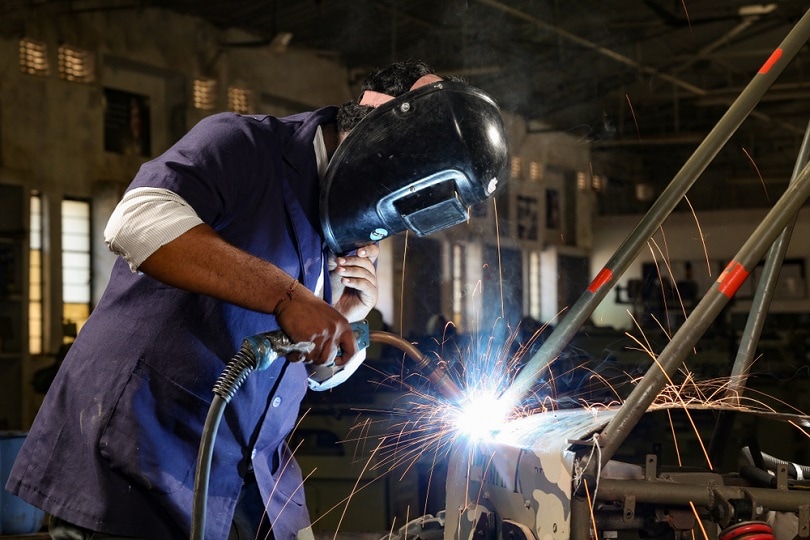
4. Why Should I Monitor Conductance?
Conductance is usually the opposite of resistance. This means that the higher the resistance, the lower the level of conductance. Monitoring conductance is useful since it provides vital information regarding periodic requirements for machine repairs and maintenance. Monitoring can also provide important information about the suitability of a workpiece for resistance welding.
5. What Electrical Requirements are Needed for Resistance Welding?
In resistance welding, a typical three-phase electric current with 62-72 amps is optimal. If the three-phase electric current is not available, welders can use a single-phase but only if a substantial voltage is present. However, using a single-phase requires additional welding time. This may create a large heat effect zone or heat-affected zone (HAZ).
6. Is Power the Most Important Part of a Quality Resistance Weld?
No. For you to get a quality resistance weld, the best combination to consider includes power, time, nugget size, and squeeze pressure.
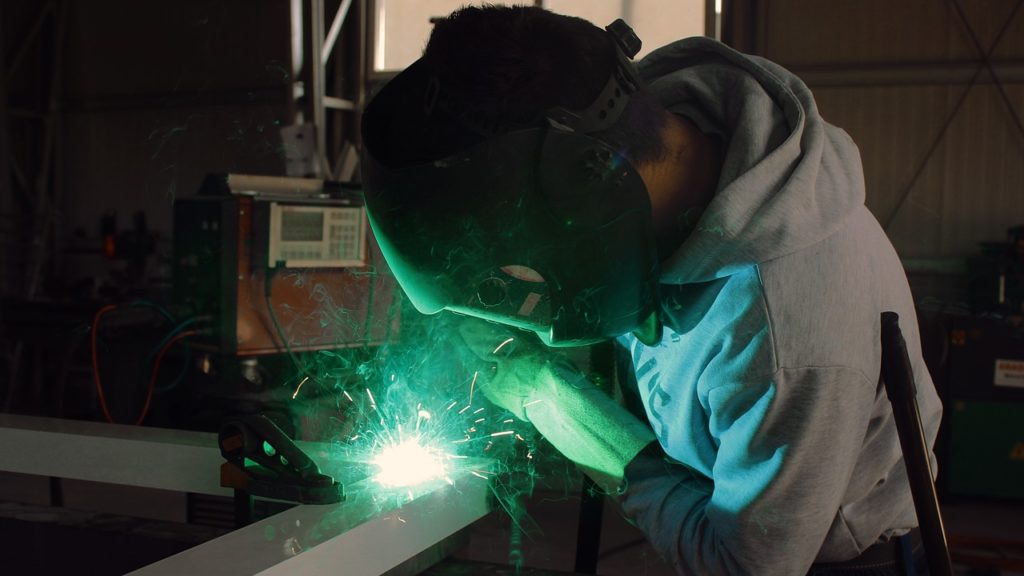
7. Is Weld Quality Documentation Important?
You will always be held accountable for your work and weld qualities. Accountability also extends to the shop and the technician. As such, always print and document all your weld quality.
8. Is the Force Between the Electrodes Important?
Using a proper welding force will reduce the surface material resistance, thus eliminating expulsion or flashing.
Final Thoughts
Resistance welding is essential in joining either similar or dissimilar metals using heat. This method can also be used to weld different metals using pressure making the process versatile. Both beginners and seasonal welders can use the technique because of its simplicity. One is only required to learn about the basics of welding, and after that, you are good to go.
Featured Image Credit: Dmitry Kalinovsky, Shutterstock
